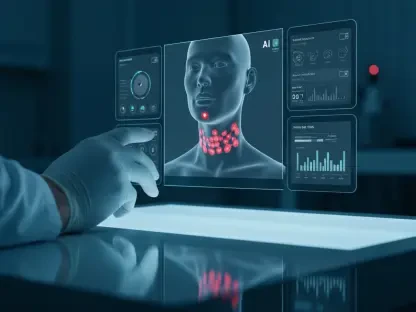Prostate cancer screening has long relied on blood tests, MRIs, and biopsies, each carrying its own set of drawbacks, such as causing discomfort and leading to the overdiagnosis of low-grade cancers that might not pose significant health risks. These traditional approaches, while effective in certain situations, often present challenges for patients and medical professionals. However, recent advancements from researchers at the University of Michigan Health Rogel Cancer Center have led to the development of a new urine test called MyProstateScore 2.0 (MPS2). This innovation promises a less invasive and more accurate alternative to existing screening methods, revolutionizing the way prostate cancer is detected and managed.
The Development of MyProstateScore 2.0
In recent years, researchers at the University of Michigan have been diligently working on improving methods for prostate cancer screening. The original MyProstateScore test showed potential in detecting higher-grade prostate cancers, helping patients avoid unnecessary biopsies. This test, however, required a digital rectal examination (DRE) to collect urine samples, making it less appealing due to the discomfort associated with DREs. Recognizing the need for a more patient-friendly approach, the team set out to modify the urine collection method, eliminating the requirement for a prior DRE.
The breakthrough came with the development of the MyProstateScore 2.0 test, which analyzes 18 genes linked to aggressive prostate cancers. By doing so, MPS2 focuses on identifying Gleason 3+4=7, or Grade Group 2 and higher, which are more concerning for patients and doctors due to their aggressive nature. This advancement makes the test more accessible and comfortable for patients, broadening its potential use and acceptance. The elimination of the DRE component significantly increases the practicality of the test while maintaining its efficacy in detecting high-grade cancers.
Clinical Validation and Efficacy
A clinical validation study involving 266 men who did not undergo a rectal exam demonstrated the impressive accuracy of the MPS2 test. The results indicated that MPS2 was able to detect 94% of Grade Group 2 or higher cancers, surpassing the sensitivity of traditional blood tests. The mathematical models used in the study suggested that the MPS2 test could have prevented up to 53% of unnecessary biopsies, reinforcing its potential as a reliable screening method. This high level of sensitivity and accuracy underscores the test’s capability to correctly predict the likelihood of aggressive prostate cancer development.
The primary benefit of MPS2 lies in its ability to provide reassurance to both patients and physicians by reducing the need for invasive procedures and focusing resources on individuals at greater risk. By offering a non-invasive alternative that rivals the accuracy of more invasive methods, the MPS2 test stands as a significant advancement in prostate cancer care. Patients can now undergo a more comfortable screening process while maintaining confidence in the accuracy of their results, ultimately leading to better patient outcomes and satisfaction.
Cost-Effectiveness and Accessibility
One of the notable advantages of MPS2 is its cost-effectiveness compared to MRIs. Offering significant savings on healthcare costs, the test presents an attractive option for both patients and healthcare providers. The at-home test perspective eliminates the need for uncomfortable procedures, further broadening its applicability and acceptance among patients. This convenience ensures that more individuals will be willing to undergo regular screening, leading to earlier detection and treatment of prostate cancer.
With cost being a significant factor in healthcare decisions, the affordability of MPS2 could lead to widespread adoption and utilization. The test’s economic benefits, coupled with its high accuracy and non-invasive nature, make it an ideal choice for long-term prostate cancer screening programs. Additionally, the researchers aim to extend their study to larger and more diverse populations to corroborate these promising results. They are also interested in evaluating MPS2 as a surveillance tool for low-risk prostate cancer, fostering more precise and individualized patient care.
Future Directions and Implications
Prostate cancer screening has traditionally relied on methods such as blood tests, MRIs, and biopsies. Each of these screening methods comes with its own set of issues, including discomfort for the patient and the risk of overdiagnosing low-grade cancers that may not pose severe health threats. While these conventional methods can be effective, they often present significant challenges for both patients and healthcare providers.
However, a novel approach developed by researchers at the University of Michigan Health Rogel Cancer Center offers a promising alternative. They have introduced a urine test known as MyProstateScore 2.0 (MPS2). This new test is less invasive and delivers more accurate results, aiming to better detect and manage prostate cancer. The MPS2 represents a significant advancement in screening, potentially transforming the way prostate cancer is diagnosed and treated, ensuring patients receive more precise care without the drawbacks associated with older methods.









